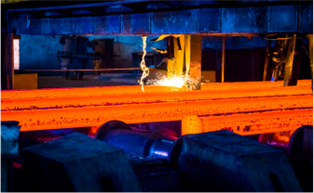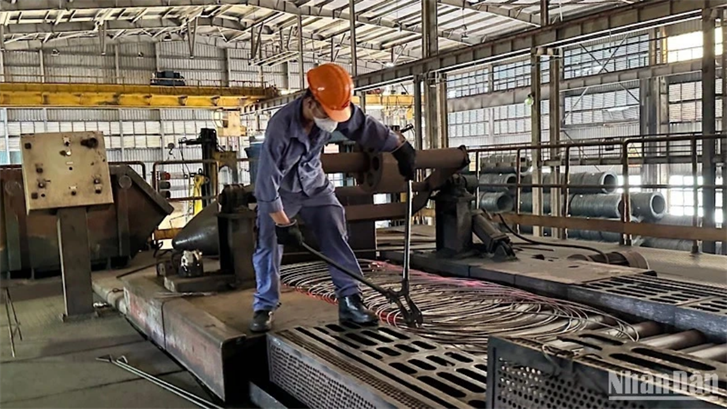Self-reliance in domestic steel production
Self-reliance in domestic steel production is considered an important requirement in the process of building an independent and self-reliant Vietnamese economy because this is a fundamental industry that serves the industrialisation and modernisation of the country, as well as helps to promote growth and ensure major balances of the economy.
29/08/2024 13:51
 Mô tả ảnh/video
Mô tả ảnh/video
However, the current reality is that Vietnam's steel industry is showing signs of imbalance between upstream development (production of billet, hot rolled steel) and downstream development (production of corrugated iron, steel pipes, finished steel products).
Steel billets and construction steel products are in excess supply, but alloy steel, especially hot rolled coil steel (HRC) - an input material for many industries such as galvanized steel, steel pipes, shipbuilding, mechanical manufacturing, and defence industry, have not met market demand due to limited domestic production capacity and must be continuously imported in large quantities.
According to statistics from the Vietnam Steel Association (VSA), the current steel billet production capacity of domestic enterprises is about 27 million tonnes per year. Of this figure, construction steel production accounts for about 14 million tonnes, ensuring 100% of domestic consumption demand as well as meeting part of export demand.
However, regarding HRC, Vietnam can only produce and meet about 8 million tons/year of the total 12 million tonnes/year of actual market demand.
To make up for the shortage, many manufacturing businesses must look to abundant imported sources at even cheaper costs than domestic ones.
According to data from the General Department of Customs, in the first four months of the year, Vietnam imported about 4 million tonnes of HRC, an increase of 32% over the same period in 2023 and equal to 159% of the production volume of the entire domestic HRC industry. Of this figure, HRC imported from China accounted for 73% with 2.9 million tonnes, more than twice the same period in 2023.
The strong increase in imported steel, especially HRC, is having a great impact on the production and business activities of domestic manufacturing enterprises.
The reason is that in recent years, the steel industries of some countries, including China, have been faced with the problem of oversupply and are looking for ways to send large amounts of surplus goods to other countries.
Even many Chinese steel companies have been accepting to sell at a loss below cost price to bring their products abroad. The price of Chinese HRC into Vietnam has dropped sharply from 613 USD per ton in early 2023 to around 540 USD per ton at the end of last May.
If compared with HRC steel imported from Korea in a particular, the cost of hot rolled steel from China is as much as 123 USD per ton lower.
Many economic experts believe that, with some steel products such as HRC, Vietnamese enterprises can produce them, but the increasingly large import quantity is a paradox. Extending the situation of importing more HRC than the current production volume will affect domestic production, increasing the risk of destabilising the trade balance, "bleeding" foreign currency, and reducing state budget revenue.
The State needs to promptly determine orientations and develop specific policies to sustainably develop the domestic metallurgical industry, especially steels serving the mechanical and machine manufacturing industries, thus protecting domestic production and production standards. It is necessary to only encourage the import of certain types of steel that Vietnam cannot yet produce.
In the long term, it is necessary to introduce a policy to attract and invest in a number of large steel production complexes in the region to serve domestic demand and have autonomous production to gradually reduce dependence on imported steel.
However, businesses themselves also need to be aware of further improving their competitiveness and proactively sourcing raw materials. It is necessary to invest in innovation of advanced, modern, energy-saving, environmentally friendly technology and equipment while gradually shifting production towards the trend of using green, clean, circular energy.
If production is self-sufficient, Vietnam's steel industry will help stabilise the market as well as the economy in general.
Minh Dung (by: nhandan.vn)








